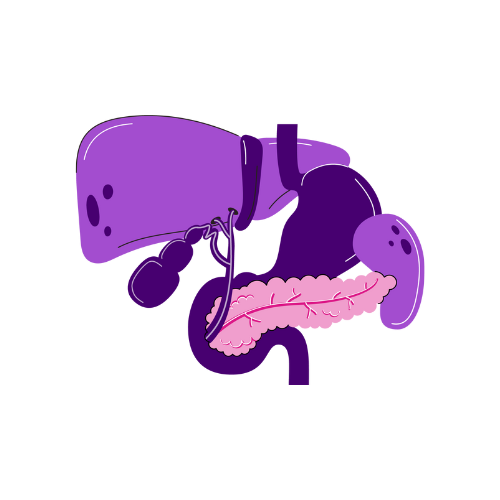What are clinical trials?

Clinical trials are research investigations that evaluate the safety, effectiveness and side effects of new treatments, interventions or tests, which aim to prevent, detect, treat or manage diseases or medical conditions. Clinical trials test these new interventions (which could be a new drug, a device or a treatment protocol) in healthy volunteers or people with the related disease or health condition. Without the clinical trial phase of medical research, new treatments could not be determined as safe or effective for patients.
To conduct a clinical trial, researchers must first prove their intervention could have the potential to help patients through preclinical testing. Preclinical testing includes basic biological research, and testing in cells, known as in vitro research. If required, the intervention will then be tested in vivo (in animal models) before being given to humans in a clinical trial. The researchers will then monitor the health effects the intervention has on the trial participants over a set amount of time.
What are clinical trials used for?
Some of the common reasons for conducting clinical trials include:
- evaluating experimental drugs, medical devices, delivery methods and surgical procedures
- development of prevention therapies like vaccines, medicines or lifestyle changes
- evaluating new diagnostics and screening methods and
- testing new health service changes
These things are known as medical interventions.
Phases of clinical trials
Clinical trials to test medical interventions are typically conducted through four phases.
Phase 1 clinical trials test the intervention, like a new drug, in a small group (20 to 80) of people to mainly evaluate its safety and look for early indications that the intervention is working. This will include things like correct dosage and immediate side effects.
Phase 2 clinical trials then study the intervention in a larger group of people (more than 100) to further evaluate its safety and efficacy (whether or not it has worked how it should).
Phase 3 clinical trials compare the new intervention to current treatments to further evaluate efficacy and safety in a larger group of patients. Once an intervention passes a phase 3 trial and is approved by regulators - the Therapeutic Goods Administration in Australia, the intervention can be sold and prescribed for use outside of clinical trials.
Phase 4 clinical trials are conducted after a drug or device has been released to the market for public use. It is often called “post-marketing surveillance”. Phase 4 trials monitor the effectiveness and possible side effects in a general population over longer periods. At this point, phase 4 trials can also be used to determine if the intervention is suitable for the treatment of other conditions.
Controls and randomisation
During clinical trials, researchers need to understand exactly how patients respond to treatments. To do this, they usually compare the new intervention to a control. A control can either be a placebo (something containing no medication) or an established intervention that is already in use. Controls help researchers to assess their intervention accurately. Placebos are rarely used in trials to test new cancer interventions unless there is no standard treatment. Most of the time cancer trials use the best current treatment plus the new drug or without the new drug so patients always receive the best know treatment when they are on a clinical trial. A committee of people review the proposed control to ensure that it is an ethical option for treatment.
Before you agree to participate in a clinical trial you will be told whether the trial you are interested in joining uses placebos. Once you agree to participate in the trial you will randomly be assigned to receive the new intervention, or the control. This is called randomisation and is usually done by a computer.
Blinding
Often trials are ‘blinded’ which means that the participants and or researchers do not know who is receiving the new intervention. To ensure more accurate results, you will not know whether you are receiving the control or new intervention. In what are called ‘double-blinded’ trials, neither the research organisation running the trial nor the participant, know who is receiving the new intervention. The data is recorded in such a way that after the trial finishes or if there is a health emergency during the trial, your doctor can find out if you are on the new intervention or not.
Eligibility criteria
Clinical trials also have eligibility criteria which specifies who can participate in the trial. Eligibility criteria help to ensure that the health effects participants experience are because of the intervention and are not related to other aspects of the participants’ health or lifestyle.
Why participating in a clinical trial is important
Clinical trials are vital to demonstrating that potential new treatments are safe and effective therapies. Being a volunteer in a clinical study is incredibly important as all humans react in diverse ways to medical treatments. Participating in a clinical trial can also be extremely beneficial to patients. Patients who are involved in clinical trials report better health outcomes and may have access to new treatments that may be effective. However, it is important to note that participating in a clinical trial my or may not treat your cancer more effectively than standard treatment, it is completely voluntary to participate, and you can withdraw from a trial at any time. The data obtained from the trial will help researchers develop new treatments in the future.
For more information about clinical trials, please visit the Australian Cancer Trials website. If you would like to participate in a clinical trial, we recommend you speak with your doctor.
Sources
Australian Cancer Trials, accessed Jan 2020.
Australian Clinical Trials, accessed Jan 2020.
Always consult your doctor or health professional about any health-related matters. PanKind does not provide medical or personal advice and is intended for general informational purposes only. Read our full Terms of Use.
Thank you to the clinicians, researchers, patients, and carers who have helped us create and review our website information and support resources, we could not have done it without you.






